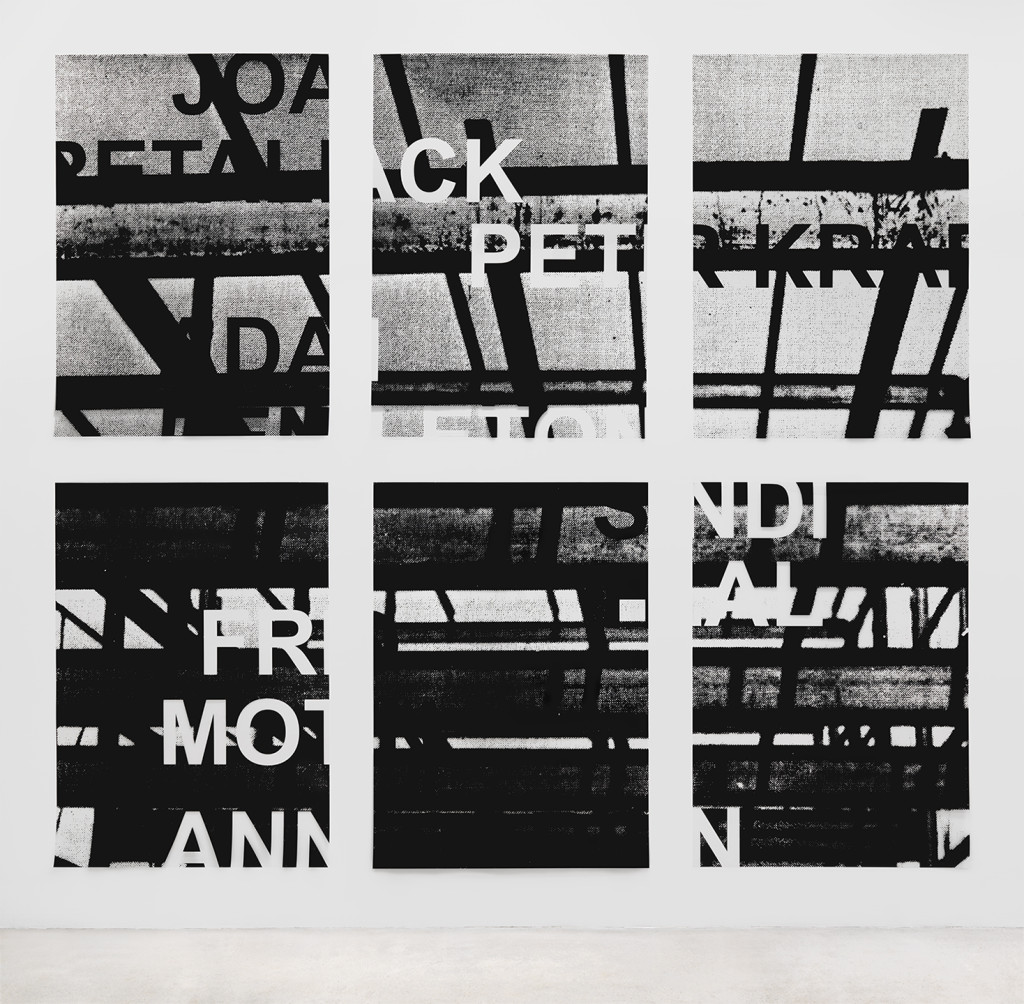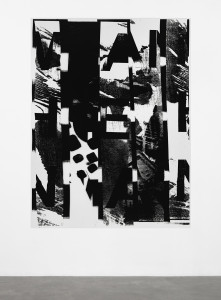
Adam Pendleton is one of the artists in ‘Adventures of the Black Square. Abstract Art and Society.
Whitechapel, January 15 till April 6, 2015.
A Woman on the Train asking Angela Davis an Autograph, 2014.
About: Adam Pendleton
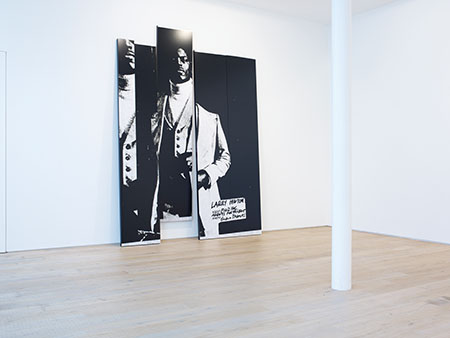 I’ll be Your, 2012.
I’ll be Your, 2012.
The oldest manufactured mirrors to have come down to us are made of obsidian, their black surfaces polished until they became reflective. ‘I’ll Be Your’, Adam Pendleton’s first solo show in the UK, as well as his first with Pace, was all surface. The title is emphatically cropped – like many of the black silkscreen images on display, applied to canvas, mirror, Perspex or transparencies – leaving it to the viewer to supply the missing word (‘Mirror’) from the 1967 song by the Velvet Underground & Nico. Crying out to be completed, it gestures towards the ‘Incomplete Open Cube series’, begun in 1974 by Sol LeWitt, an early supporter of the young American artist’s work.
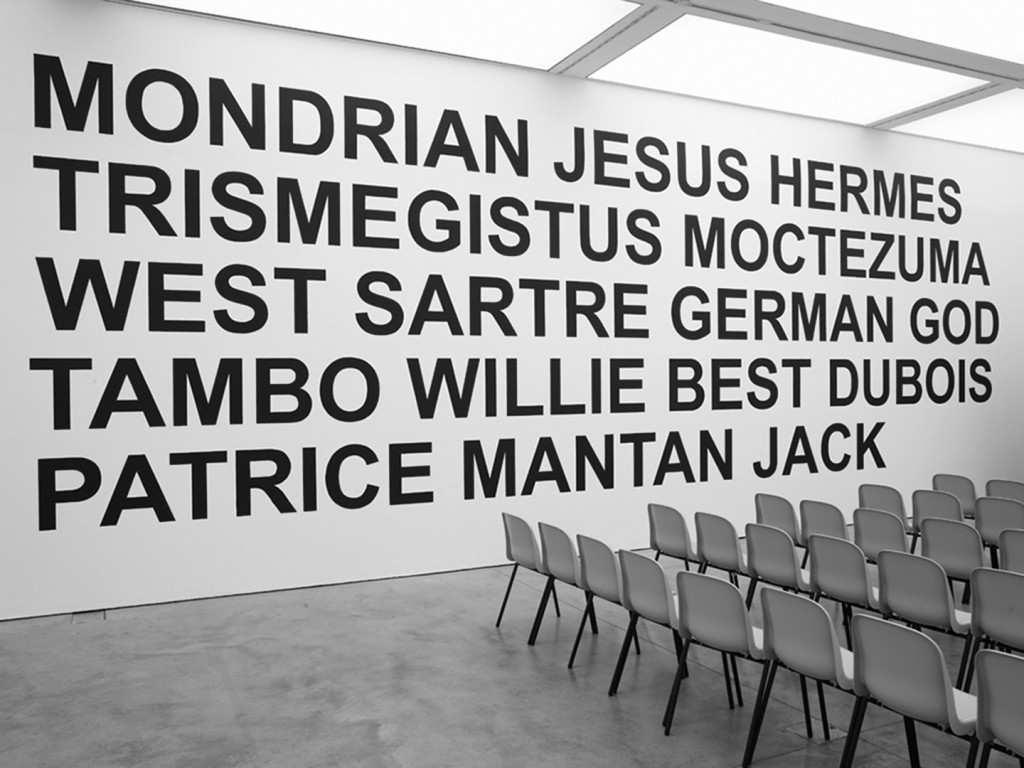 Notes on Black Dada Nihilismus, 2009.
Notes on Black Dada Nihilismus, 2009.
Photocopied reproductions of LeWitt’s white Minimalist sculptures, blown up out of all recognition and silkscreened onto canvas, furnish Pendleton with the matter of his own ‘Black Dada’ works (2008–ongoing). Three large and somewhat grandiloquent paintings from this series hung side by side in the first gallery, appearing monolithic though, on closer inspection, they turned out to be diptychs. Thus broken up, the monochrome surface is further differentiated by increasingly reflective finishes of paint: matt enamel for the ground; gloss enamel for the thick diagonal lines that correspond to fragments of LeWitt’s sculptures; varnished gloss enamel for the two capital letters apportioned to each work and neatly positioned around the edges of the canvas. (These spell out their titles and, ultimately, ‘Black Dada’.) Though, strictly speaking, Pendleton works exclusively with what he calls ‘absolute blacks’, the different finishes, according to the artist, make up a three-colour palette in this group of black-on-black paintings.
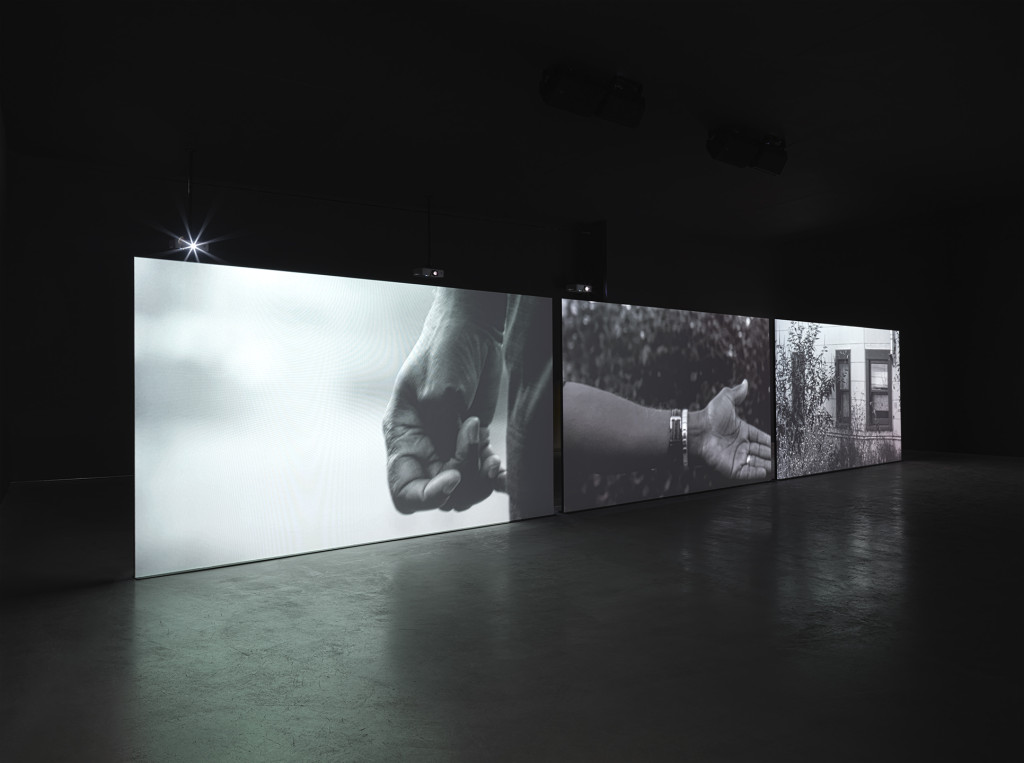 My Education: A Portrait of David Hilliard, 2014.
My Education: A Portrait of David Hilliard, 2014.
Capital letters, in the sans-serif Arial font that Pendleton favours, also feature – on their own, this time and not in sets of two – in the ongoing ‘System of Display’ sequence, which is contemporaneous with ‘Black Dada’. Their use is most striking in the square, three-inch-deep and, in relation to the other pieces on view, diminutive System of Display, E (MEMORIES/Heinz Loew, primary three-dimensional design elements, 1928) (all works 2012), named after a Bauhaus design student. The titular letter ‘E’, inscribed in black ink on the reverse of the Perspex surface and reflected, at a three-inch remove, in the mirror image at the back of the work, sharply contrasts with the grainy geometrical shapes and volumes outlined in the silkscreen picture printed on the mirror’s surface. In this and in the two other works from the series, showing the same interior scene, albeit from different vantage points, with works by Picasso as they were displayed at the first Documenta in 1955, the mirror’s surface effectively stands in for the white planes in the photocopied image. But the mirror also draws both spectator and the immediate surroundings into the frame.
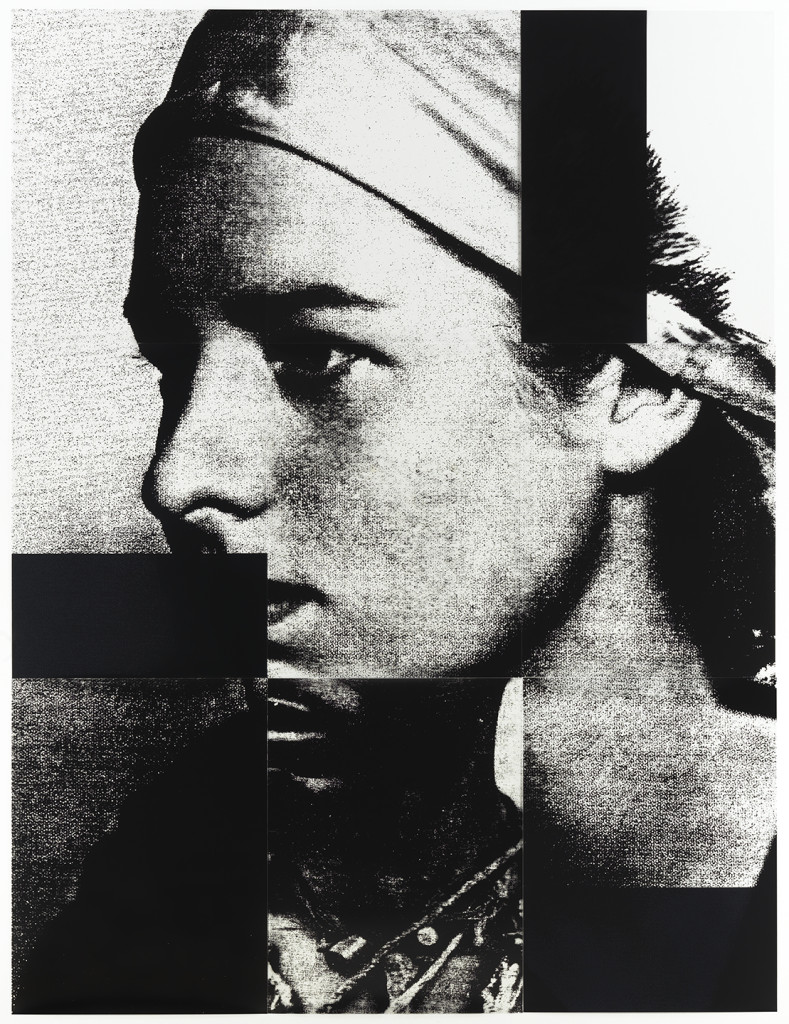 Untitled (Woman), 2013.
Untitled (Woman), 2013.
Different artistic periods or design styles are mixed together in Pendleton’s recent output, in which art-historical and more popular references from a variety of sources, such as the experimental indie-rock band Deerhoof recording a song based on Jean-Luc Godard’s 1968 film Sympathy for the Devil in the video installation BAND (2009), abound. This accounts for the work’s curiously dated, even nostalgic, feel, for all of the artist’s insistence that he is ‘most interested in images that are timeless’.
Two such images – featuring, respectively, a male and a female protagonist, both of whom are black – illustrate the ‘Black Dada’ aesthetic in the latter part of the exhibition, alongside a tongue-in-cheek manifesto of sorts that smacks of automatic writing. Printed onto transparencies against the backdrop of installation shots from Pendleton’s 2010 show at The Kitchen, the text comprises a series of statements and quotations that range from the mundane to the erotic to the occasionally poetic. It takes its title from an incendiary poem by Amiri Baraka, who initiated the 1960s Black Arts Movement in Harlem. A dapper young man posing for a talent agency in Larry Hinton (white) , a four-panel work, wears an expression of proud defiance that to Pendleton has something ‘Black Dada’ about it. The image we are left with, an enlarged film still from a 1964 romantic drama, Nothing But a Man, spread over nine highly reflective transparency sheets delicately pinned to the wall, shows a woman crying, her arm presumably folded around a man’s neck – a black counterpart to the white heroines who people Roy Lichtenstein’s paintings. Viewed from close up, the macroscopic projection dissolves into clusters of Braille-like dot patterns spanning the full spectrum of grey areas.
(Agnieszka Gratza Frieze, Issue 152 January-February 2013 about exhibition in 2012.)

